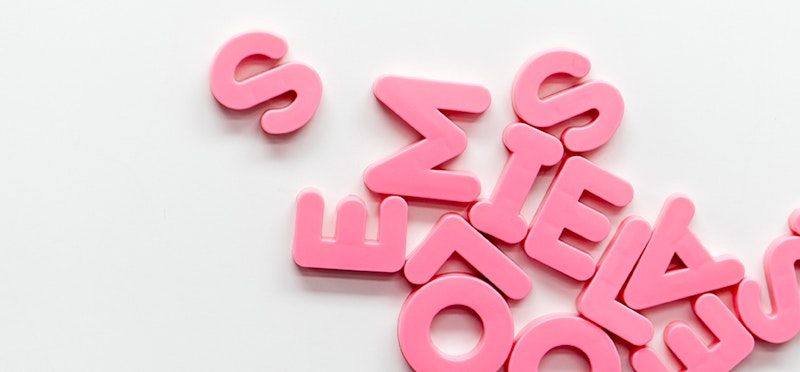
This lesson on split vowel digraphs, often referred to as Silent e, or even Magic e, by teachers, is an extremely important lesson to conduct properly. Here are two items you can download for use when teaching the concept of a split digraph, but be sure to closely follow the steps described below to get the most benefit from them.
Use the Term "Split Vowel Digraph" Instead of "Silent e" or "Magic e"
It was, oh, so tempting to title this entry Explaining Silent-e, because then everyone would know exactly what the topic was. But doing so would be giving in to the strained logic underlying the concept of a silent letter. All letters are silent; letters don’t make sounds, letters are quiet symbols that represent sounds.
If you tell an adult friend that a painting speaks to you, you’re communicating something to him about the impact of that particular painting on your thinking. If you tell a young child a painting speaks to you, he’ll think you’re a little weird, but if you keep on saying it, he’ll probably start thinking that he should be hearing something coming out of that canvas too.
The point is, if you’re trying to teach a young child phonics, try to avoid the use of the term silent. It's only there because the creator of the curriculum you’re using couldn’t figure out how to explain the concept in kid logic. The "h" in ghost isn’t silent. Well, actually it is, but so are all the other letters. Instead, just explain to any young child that the "gh" in ghost, ghastly, ghoul and ghetto is just a digraph representing the /g/ sound. With a five year old, just underline the "gh" and tell him it’s the /g/ sound at the beginning of some words.
The same holds for the other popular explanation of the split vowel digraph, that is, the Magic-e. What does the word “magic” mean to a child? It means that what he’s seeing is amazing; it’s beyond his understanding; it’s magical. So the use of the term “magic-e” delivers the not-so-subtle message to the child that he won’t really be able to understand what’s happening, so he should just accept it. You might as well be saying "It's a mystery," because you're delivering that message in kid logic.
So what do we do about Silent-e or Magic-e? If that ending "e" is not silent or magical, what is it, in kid logic that is? Here’s a better way to explain to a young child the split digraph spellings in words like save, theme, bite, cone and cube.
Step 1: Introduce "doe" and "toe"
First, show them words like toe, foe, doe, hoe and woe, or names like Joe, Moe and Poe. It only takes two or three examples. Underline the "oe" in each of the examples you’ve chosen and explain that it is the /oe/ sound. Note the emphasis on the word “it” in the last sentence. Do not say "These are the /oe/ sound." The "oe" is a digraph, one unit, so always refer to a digraph as one thing, one unit, as an it, not as a plural.
Step 2: Introduce "note"
Now show your child the word note and explain that we could have spelled note like this: noet. If we had, it would have made perfect sense. Then tell your child that a long time ago a guy wrote a huge dictionary because people were spelling words all sorts of unusual ways (sort of like kids do now in emails, as in “How r u?, I’m gr8!”) and that this guy had one problem. He really, really, really (this is actually sort of true, by the way) liked to put the letter "e" at the end of a word whenever he got the chance.
Step 3: Discuss Words with an Extra "e"
Here’s a few examples to make the point to your child. He could have gone with ar (like car) but no, he had to go with are (making it look like it should rhyme with share.) He could have gone with wer (like her) but went with were, forever condemning kids to confuse it with where. Have and love and sleeve and every other word ending in the /v/ sound got an "e" tacked on even if it did make have look like save and love look like cove. It goes on and on, but you get the idea. Just relay enough of this to your child to make the point.
Step 4: Explain the Split Digraph Concept
Then explain that when he saw all the words with "oe" (and "ae" and "ie" and "ue") in them, he couldn’t resist, and whenever another sound followed the "oe" digraph, he split the vowel digraph "oe" so he could put the "e" at the end of the word. This explanations leads directly to the descriptive term "split vowel digraph." (This assumes, of course, that your child understands what a vowel sound is. If not, go over the explanation found on a previous page, What Are Vowel Sounds?, before attempting to explain the concept of a split vowel digraph.)
All that remains then is for your child to learn to recognize the Split Vowel Digraph spellings in words. To do that all he needs is some practice looking for it. Incidentally, I would tell all my young clients that this is the “o-e” digraph, pronounced “o dash e," and they quickly learned what I meant. I simply told them that the dash is where the ending sound gets tucked into the word.
This is all kid logic. They buy it and understand it. In fact, the first child to ever use the worksheets using this concept, when asked to underline the digraph in "note," underlined the letter “o” and then the letter “e” and in a stroke of creativity, he then hooked them together with what he called a smiley. I’ve encouraged this with every young client since, and they all understand it.
Step 5: Practice and Reinforce During Regular Reading
Here again are the two items at the top of this page that you can download as PDF files to help instill the above concepts. The first is a very short story for young children who are confused about the concept. Just have your child read it and correct him when he misses a split vowel digraph by pointing to the two letters that go together to make the vowel sound. The second is a game that you can play with your child to help him build awareness of the split vowel digraphs.
You can use the two words in the title, bike and skates, to make the point that "i-e" is the /ie/ sound and that "a-e" is the /ae/ sound, then make the point that all of these split digraphs represent the sound that is just the name of the first letter, including "e-e" and "u-e."
If you try this, you’ll find that your child understands it, and you’ll no longer be confusing him with the mysterious concept of a silent letter. Struggling readers are in the habit of ignoring letters and even whole syllables in words all the time. Don’t encourage them by telling them they should ignore some of them, which is exactly what use of the terminology silent letter does.
Incidentally, the OnTrack Reading Advanced Code Phonics Workbook contains both the Bikes and Skates story and the Split Vowel Digraphs Game, and the comprehensive free instructions cover all of the instructions detailed on this page. The workbook is a complete advanced code phonics program that incorporates each of these "Tidbits" articles and covers precisely the information your child will need to become proficient in phonics, including the most effective multisyllable decoding method you will find anywhere. (Seriously, it is the best multisyllable method you will find anywhere because it uses the same "kid-logic" approach that you've found here.)
After your child has a good grasp of how to decode one-syllable words with split vowel digraphs, Adding Suffixes to Split Vowels has three free worksheets you can use to help him learn to read longer words created from root words containing split vowel digraphs.



